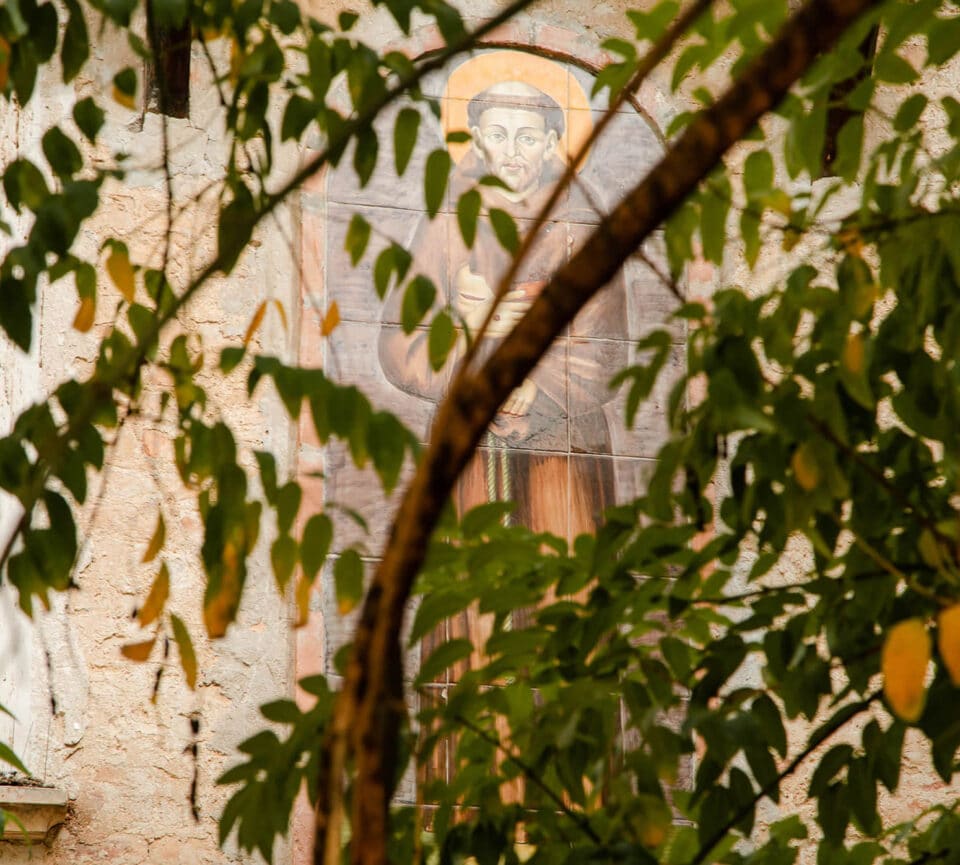Rediscover the authentic flavours of organic products: from our land to your tables.
Since the end of the 1800s, the Cerulli Irelli family has owned the estate located on the Pescara Hills, which includes a farm and two important historical buildings: the former Convent of San Panfilo Fuori Le Mura of the eleventh century and the De Sterlich Tower of the sixteenth century.
With its 150 hectares of land, the estate enjoys a privileged position: it overlooks the Adriatic Sea to the north-east and is protected to the south by the Maiella and to the west by the Gran Sasso massif.
The farm with the Convento San Panfilo brand, respecting the environment and the ancient rules of the agricultural tradition, produces organically, without the use of chemicals, using crop rotations and organic fertilizers.
And this is how the genuine fruits of our lands grow.
Ancient grains
A large part of the estate is dedicated to the cultivation of the precious Senatore Cappelli wheat, from which our pasta is made, and the San Pastore soft wheat with which flour and a wide variety of breads are produced.
Wine
Montepulciano d'Abruzzo, Pecorino and Cerasuolo are the wines produced from the native varieties of vineyards that inhabit our hills dominated by the Torre De Sterlich.
Oil
There are about 1000 olive trees on the estate. The cultivars present are all intended for the production of olives for oil and are typical of the Abruzzo region: there are mostly the Dritta and Leccino varieties in smaller quantities. Hence our organic extra virgin olive oil.
Hazelnuts
Another 8 hectares are dedicated to this extraordinary product, which is used to make the fabulous hazelnut spread with cocoa.
Chickpeas, artichokes, honey and other products
Wanting to establish ourselves as an all-round farm, we are also dedicated to the cultivation of other products, such as chickpeas and artichokes and the production of organic wildflower honey. Our vegetable garden guarantees a wide range of other products that are used in the kitchens of the Convent, an accommodation facility and used for events in the heart of our company.
The foundation of the complex of the Convent of San Panfilo Fuori le Mura, built by the Benedictines, can be ascribed to the eleventh century, but the current three-arm structure with a central cloister was the work of the Franciscans and dates back to the Baroque period. The convent, following the laws of the Kingdom of Sardinia that led to the laicization of many ecclesiastical assets, changed its intended use in 1866.
In 1892 it was purchased by Giuseppe Cerulli Irelli who, with the intention of giving the structure an appearance more in keeping with his social status, entrusted the renovation of the façade to the German architect Ernst Wille, known for having built many important residences in Rome at that time.

At present, the former convent is spread over three levels which, following the Baroque layout, delimit together with the church the frescoed cloister with a central well. In the lunettes of the cloister there are two valuable cycles of frescoes, made between the seventeenth and eighteenth centuries, with episodes from the life of St. Francis of Paola and St. Francis of Assisi.
Subsequently, it was inherited by Quintino Cerulli Irelli, married to Anna Maria Massara who, with great passion, took care of the internal renovation, bringing precious embellishments that we still keep intact today.
Since 2009 the building, worn out by time and the seismic events of recent years, has been the subject of an important consolidation and restoration work that has given this place back its charm and the magic of a historic residence.
The important collaboration with the Academy of Fine Arts of L'Aquila (a pilot project of a construction site-school) has allowed many students in the last year of the Restoration Course to engage directly in the restoration of the frescoes of the 26 lunettes of the cloister.
The Torre de Sterlich
On the estate there is another building of historical importance: the Torre de Sterlich.
The tower, which dates back to the sixteenth century, belonged to the family of the Marquises of Cermignano de Sterlich. It was an ancient observation tower, useful for safeguarding the surrounding area from potential attacks.
Since the end of the 19th century it has been owned by the Cerulli Irelli family and stands over the entire farm, standing alone to protect the vineyards, olive groves and cultivated fields.














